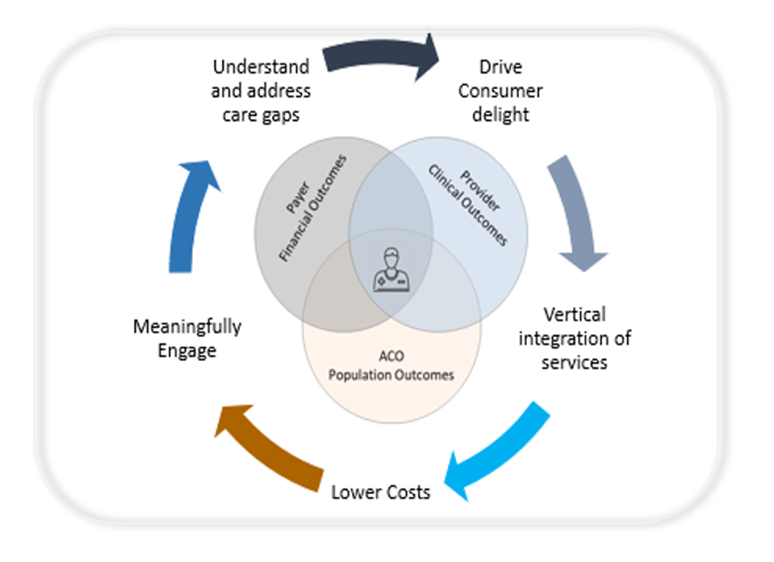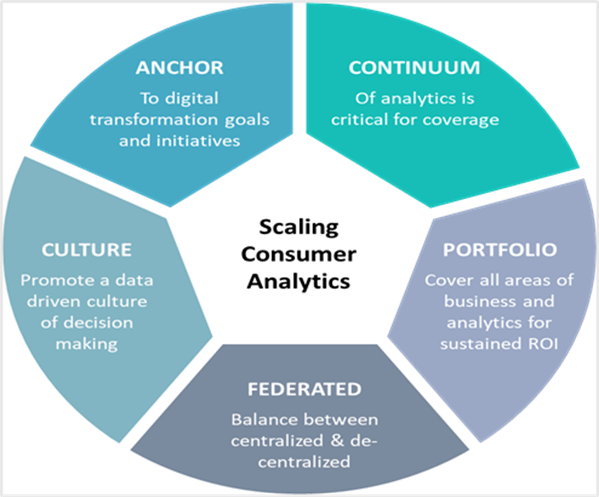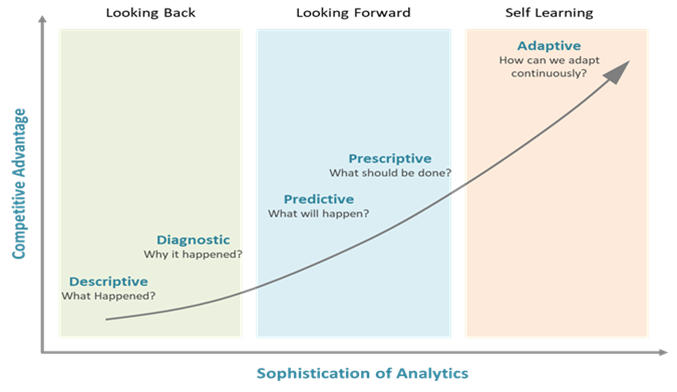Abstract
In recent years, there has been a growing emphasis among patients on self-care and proactive family health management. Patients now demand a personalized and differentiated healthcare experience, encompassing every aspect of their medical journey, from registration and care management to billing and discharge. Well-informed about medical conditions, treatment options, and associated risks, they are no longer willing to settle for subpar care and readily switch to better healthcare providers that meet their expectations.
To address this evolving landscape, healthcare providers must embrace industry-responsive strategies and realign their systems and services to meet patient needs. Key to this transformation is a comprehensive understanding of patient preferences aand current challenges. This whitepaper explores how providers can acquire deeper insights into patient behavior and preferences, and accordingly scale these efforts through multiple approaches. Additionally, it highlights the tangible benefits that a patient-centric care paradigm can unlock for patients and providers.
Introduction
Following the COVID-19 pandemic, a notable shift has occurred in people’s attitudes toward their health and wellbeing, prompting them to adopt a more proactive and preventive approach. Consequently, there has been an unprecedented surge in the number of individuals seeking healthcare services, posing significant challenges for healthcare providers to meet the rising demand. This surge can be largely attributed to the active engagement of Generation Z and millennials, who are now making well-informed choices regarding their health and the wellbeing of their families. Patients are increasingly demanding personalized experiences at every stage of their healthcare journey and changing providers when their expectations are not met. A patient experience survey from 2021, revealed that 30% of patients switched providers due to a lack of differentiated consumer experience.
Recent industry research has identified several reasons driving patients to change healthcare providers. These include poor experiences with administrative teams, front desk staff, physicians and care teams, dissatisfaction with digital health solutions and negative patient reviews. In addition, long waiting times to secure appointments and in waiting room queues at clinics, and difficulties in commuting to the doctor’s office contribute to patients’ decisions about changing healthcare providers. When patients are challenged at any stage of their healthcare journey, they tend to defer their care, which negatively affects their overall health.
Healthcare providers today need to understand patient pain points and incorporate consumer-centric strategies that address such challenges, enabling them to deliver better healthcare services, increase access to care and foster greater trust in care teams. This would ultimately drive better patient outcomes, greater patient satisfaction, and improved patient retention.
Understanding patient challenges with consumer analytics
To enhance patient experience and better cater to individual preferences, healthcare providers must gain a deeper understanding of their patients. To achieve this, providers must implement consumer analytics – the practice of collecting, analyzing, and interpreting data related to consumer behavior, preferences, and interactions across the healthcare continuum.
By analyzing data from various sources, such as health records, patient feedback, consumer experience surveys, and social media interactions, providers can understand how patients make decisions regarding their healthcare and interactions with providers. Moreover, consumer analytics empowers the development of finely-tuned marketing and communication strategies, enabling providers to target specific audiences effectively.
There are various sources that providers can draw data from for analysis. Let us briefly discuss them below:

How consumer analytics delivers excellence for patients and providers
In modern-day healthcare, ensuring ease of access, convenience, and building trust have become indispensable elements in designing optimal consumer experiences. Embracing consumer analytics in healthcare not only drives outcomes for providers and patients but also transforms the patient-provider relationship, elevating the quality of care and experiences for all parties involved.

Consumer analytics framework – Key principles

In healthcare, a consumer analytics framework is a set of guidelines for healthcare organizations to collect and analyze data about patient experiences across their healthcare journey. This framework aims to enhance the overall patient experience, optimize healthcare processes, and adapt to changing patient expectations by identifying areas for improvement.
Let us briefly break down the key principles:
1. Complete consumer-patient journeys
The first principle aims to identify areas for improvement in patient journey by mapping the entire journey from the initial research phase to post-visit follow-up. This journey includes various touchpoints across the healthcare enterprise, both physical and digital, and involves interactions with partners and third-party stakeholders. The key touchpoints in the patient journey are as follows:
Research and information gathering
In the first phase, patients seek information about their health concerns, potential treatments, and healthcare providers. They may search online, consult friends and family, or seek recommendations from primary care physicians.
Registration and booking
Once patients decide on a healthcare provider, they set out to book appointments or register for services, which can be done online, over the phone, or in person at a healthcare facility.
Prior to the visit
Prior to an appointment, there may be communication between the healthcare provider and the patient, including appointment reminders, information about the visit, and pre-visit preparation instructions.
In-person visit
This is a crucial touchpoint where the patient interacts with healthcare providers, undergoes diagnosis, lab work, or receives treatment.
Post-visit care
After the visit, there may be follow-up appointments, communication about test results, or prescription refills.
2. Closed loop model
The second principle emphasizes the importance of collecting continuous patient feedback about their experiences with healthcare providers, facilities, and services. This feedback can be collected through various channels, including surveys, focus groups, social media, and online reviews. By collecting and analyzing feedback, providers can identify areas for improvement, enhance communication between providers and patients, streamline processes, and address staff training needs. The feedback also helps providers understand evolving patient expectations and adapt to changes in the healthcare landscape in near real time.
3. Benchmark and connect the dots
The third principle involves comparing a healthcare organization's performance against internal and external benchmarks. By analyzing the measurements against relevant benchmarks, providers can better understand patient needs, preferences, and behaviors. This understanding enables them to develop targeted strategies to improve patient engagement and satisfaction.
Overall, the consumer analytics framework focuses on understanding the patient journey, continuously gathering and utilizing patient feedback, and benchmarking performance to improve the quality of care and enhance the overall patient experience in healthcare settings.
Five strategies for scaling consumer analytics in healthcare
At CitiusTech, we command a deep understanding of the intricacies of healthcare systems. Leveraging this vast experience and coupling it with analytical-based strategies, we have formulated five highly effective approaches for healthcare providers to scale their consumer analytics initiatives. Let us discuss each of them below:

1. Anchor-based approach
Anchor-Based approaches are methods used to interpret patient-reported outcome changes by linking them to other clinical changes or results. This involves connecting or "anchoring" changes in patient-reported outcomes (PROs) to other clinical changes or results. By implementing this approach, clinicians and caregivers can interpret the changes with the proper context. This enables providers to gain a holistic understanding of a patient's experience and provides valuable insights into the effectiveness of treatments, interventions, or care plans from the patient's perspective.
2. Continuum of analytics
In healthcare, it is imperative that patients receive a seamless range of health services, addressing various aspects of their health needs as they evolve throughout their health journey. This can be achieved with a ‘Continuum of care’ through which healthcare providers can deliver comprehensive health services to patients, for the specific care of the need, when they need it, regardless of their location or condition.
The continuum of analytics in healthcare is a framework that describes the five different levels of analysis that can be performed on healthcare data across a patient’s healthcare journey to ensure. These are as below:
Descriptive analytics
At the foundational level, descriptive analytics involves the examination of historical data to understand what has happened in the past. Providers can use descriptive analytics to gain insights into patient demographics, patient volumes, resource utilization, and other key performance indicators.
Diagnostic analytics
Diagnostic analytics goes a step further and aims to identify the root causes or reasons behind the events observed in the descriptive analytics phase. With this analysis, providers can investigate factors contributing to patient readmissions, identify risk factors for certain conditions, or assess the effectiveness of treatments.
Predictive analytics
Moving a step further, predictive analytics uses historical data and patterns to forecast or predict future events or outcomes. This enables providers to analyze patient data and historical treatment outcomes to predict the likelihood of certain diseases, patient readmissions, treatment success and even identify high-risk patients.
Prescriptive analytics
Prescriptive analytics goes beyond predicting future events and recommends possible courses of action to achieve desired healthcare outcomes. It goes beyond just forecasting and empowers healthcare providers to make informed healthcare decisions based on predictions and simulations.
Adaptive analytics
The highest level of the continuum, adaptive analytics helps with the understanding of a patient's cultural values and beliefs in healthcare practices. By leveraging adaptive analytics, healthcare providers foster awareness and sensitivity towards patients' unique needs, creating a comfortable environment to minimize misunderstandings and maximize patient satisfaction.

Figure: The five stages of continuum in analytics
Overall, the continuum of analytics in healthcare progresses from describing past events, diagnosing their causes, predicting future outcomes, suggesting actions to optimize those outcomes, and finally, fostering adaptability in patient care based on individual needs and cultural factors. Each stage builds upon the previous one, enabling healthcare providers to make data-driven decisions and provide personalized, patient-centric care.
3. Portfolio approach
The portfolio approach refers to a management technique used to make decisions on the allocation of resources, such as funds and time, to different programs aimed at improving consumer experiences and outcomes in the healthcare industry. This approach can help healthcare providers evaluate various programs and initiatives based on their financial performance and relevance to organizational goals.
The portfolio approach typically involves three types of programs -
- Long-term programs: Designed to provide insights into consumer behavior over the long term. This involves collecting and analyzing large amounts of data, and may require the use of sophisticated analytics techniques.
- Proof-of-concept programs: Designed to test new ideas about consumer behavior. These programs are generally shorter and less expensive than long-term programs but can provide valuable insights into the potential of new approaches.
- Inquisitive analytics: Designed to explore new areas of consumer behavior that still need to be better understood. These programs generally involve asking open-ended questions of consumers, or they may include the usage of data mining techniques to identify patterns in consumer behavior.
- How can we empower the patient to make better decisions about their health?
- What would it take to hyper-personalize treatment plans and provide precision medicine with proactive health support?
- How do we enable Value-Based Care (VBC) to deliver high-quality care at lower costs?
- How do we build a healthcare system where preventing disease would be more profitable than treating one?
4. Federated model
This approach seeks to strike a balance between two contrasting approaches: decentralized and centralized models. The main objective of this approach is to bring intelligence or data analytics capabilities closer to not just consumers but also to large healthcare organizations that may consist of multiple departments and business units.

5. Culture alignment
Culture alignment aims to foster a patient-centric environment, where the focus is not just on medical outcomes but also on creating positive and engaging experiences for patients throughout their healthcare journey. By leveraging consumer data and experience design, healthcare providers can enhance patient satisfaction, loyalty, and ultimately, the overall quality of care provided.

Driving tangible benefits in healthcare
Let us briefly discuss the major benefits that consumer analytics delivers in healthcare:
Analyzing patient visits and treatment data enables medical providers to effectively design follow-ups and post-discharge care. This proactive approach can help lower readmission rates and reduce the overall costs of in-patient treatment.
With a comprehensive overview of each patient's interactions with their services and offerings, healthcare providers can make data-driven improvements to their services across a patient's healthcare journey. This enables them to deliver a seamless and consistent experience, further improving patient satisfaction.
Tracking the adoption rate of digital solutions allows healthcare providers to allocate development funds more effectively, ensuring investments are directed towards services that benefit patients and care providers the most.
Data gaps can exist when various clinical departments, IT teams, and systems operate in isolation. Centralizing data collection and management facilitates seamless communication and information flow within healthcare organizations, leading to better care coordination.
Consumer analytics is already driving improved healthcare outcomes today. Let us briefly glance at a few instances below:

Conclusion
In the present healthcare landscape, healthcare providers must move beyond patient engagement and focus on giving them better experiences to ensure strong clinical outcomes. Adapting to the dynamic expectations of patients throughout their healthcare journeys necessitates an agile approach, enabling providers to continually evolve and deliver services that meet patient needs and preferences. To accomplish this, a profound understanding of patient preferences becomes crucial.
Over the years, CitiusTech has developed substantial expertise, capabilities, and technological competency to efficiently and effectively provide valuable patient insights at a large scale. In working with leading healthcare providers globally, we have empowered them to gain deeper insights into their patients, facilitating the creation of personalized experiences and ultimately improving healthcare outcomes.
Get in touch with us today to unlock the potential of your healthcare objectives with deeper insights.






.png?width=1920&height=1080&name=Consulting2_Menu_1%20(1).png)





























































.webp?width=400&height=400&name=The%20future%20of%20Healthcare%20(1).webp)





















.png?width=400&height=400&name=7-Jun-13-2025-02-27-19-6568-PM%20(1).png)





